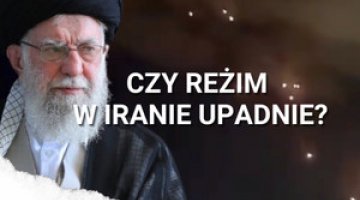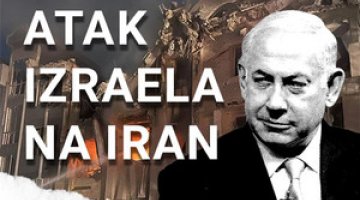Israel–Hamas: the start of Israel’s land operation
Israel has continued the retaliatory campaign it launched in response to the attack on 7 October, when Hamas attacked its territory killing 1400 people (mostly civilians) and abducting 240. In the first phase it launched air raids, and from 27 October it embarked upon an air-land operation. The Israel Defence Forces (IDF) entered the Gaza Strip from the north, and also cut the main north-south road below Gaza City (the administrative centre). This brought the city under siege and cut it off from the rest of the territory.
According to information provided by the IDF, 11,000 targets have been attacked in the airstrikes since 7 October. These strikes have been concentrated in the northern part of the Gaza Strip. However, the central and southern parts have also been affected, albeit to a lesser extent, even though the IDF has stated that the southern part is safe for civilians. According to estimates by the Economist (as of 29 October), almost 29,000 buildings have been destroyed or damaged (11% of all buildings in the Gaza Strip). On 31 October, a single Israeli airstrike destroyed several dozen residential buildings in the Jabalia refugee camp created after the 1948 war. According to Palestinian estimates, about a thousand people were killed or injured during the attack.
According to Palestinian sources, almost 9000 people have died since the beginning of the fighting (this number includes both civilians and militants). The credibility of this figure has been questioned by Israel, though these sources have proved to be reliable during previous conflicts. The Gaza Strip has been repeatedly cut off from telephone and Internet communications as a result of both damage to infrastructure and deliberate actions by Israel (as on the day when the land operation began). This significantly hampers access to information on the situation on the ground, and above all, paralyses efforts to provide aid (for example, to those trapped under the rubble). In addition to the war losses, Gaza is faced with an increasingly severe humanitarian catastrophe, caused by an acute shortage of water and fuel due to Israel’s blocking their supplies. Moreover, the fuel shortages are causing electricity blackouts.
240 Israelis (including 32 children) are still being held hostage in Gaza. Nothing is known about their condition, except for recordings of several of them which Hamas have published in order to put pressure on the Israeli authorities. Negotiations mediated by Qatar on releasing these hostages (or some of them) are underway. At the same time, missiles are still being fired from Gaza towards Israel. Most of them are intercepted by air defences, but they still disrupt civilian life. There are also ongoing exchanges of fire (on a limited scale) between Hezbollah and the IDF on the Israel-Lebanon border.
In the Israeli-occupied West Bank, law enforcement agencies are arresting people suspected of having links with Hamas and other armed groups. A high-ranking representative of Fatah, the governing party in the Palestinian Authority, has been detained in Jenin. At the same time, outside larger cities (in the so-called zone C), Jewish settlers are attacking the Palestinian population under the cover of the army in order to force them to leave their homes. According to information from the Israeli human rights organisation B’Tselem, several Palestinian villages and settlements have been taken over since 7 October. In an address on 25 October, President Joe Biden demanded that these attacks be stopped and that those responsible be held accountable. Since 7 October, Israeli forces have killed over 130 people in the West Bank. Some of them died during exchanges of fire with armed Palestinian groups, but cases of killing bystanders or people who did not pose a serious threat (for example, those throwing stones) have also been documented.
The United States, Israel’s most important ally, has supported it both politically and by supplying military equipment, mainly ammunition and air defence missiles. On 28 October John Kirby, the spokesman for the US National Security Council, announced that Washington was not “drawing red lines” for the government in Jerusalem. At the same time, the US government is increasingly putting pressure on Israel to make efforts to minimise civilian casualties. In addition, the Americans have been consistently strengthening their deterrence potential (navy ships, air forces and air defence systems) and logistic resources in the Eastern Mediterranean & the Middle East in the event of the need for a military operation and the possible evacuation of large groups of people. Germany, the United Kingdom, Canada and the Netherlands have also enhanced their military presences in the region (mainly in Cyprus and Jordan, primarily their air forces (transport & combat) and special forces.
The response from Tehran and its regional allies (the so-called Axis of Resistance, which brings together Iran, Syria and pro-Iranian organisations and militias in Iraq, Lebanon and Yemen) to the Israeli operation in Gaza has so far been limited to shelling Israel’s northern border from the territory of Lebanon and several cases of missiles being fired from Yemen (these were shot down by US Navy ships, air defence systems and IDF fighters).
The growing number of civilian casualties among the Palestinian population in Gaza is causing growing protests from both the public and government officials across the Arab world. In a joint statement on 26 October, the foreign ministers of the United Arab Emirates, Jordan, Bahrain, Saudi Arabia, Oman, Qatar, Kuwait, Egypt and Morocco said that “the right to self-defence does not justify flagrant violations of international law and international humanitarian law, or the deliberate neglect of the legitimate rights of the Palestinian people”.
The Israel-Hamas war has also reverberated across the EU, the United Kingdom and the US, where mass pro-Palestinian solidarity demonstrations have taken place. There has also been a notable uptick in anti-Semitic incidents, involving the use of anti-Semitic symbols or slogans, as well as verbal or physical attacks on representatives of Jewish communities.
Commentary
- The surge in casualties and property destruction in the Gaza Strip, as well as the worsening humanitarian crisis in the area, have shifted the attention of world public opinion from the Israeli victims of the 7 October attack to the plight of the Palestinian civilians. Israel and Jewish communities around the world have responded to this with anger and a sense of isolation, as well as accusations of confusing effect with cause and even anti-Semitism. At the same time, the gradually released information revealing Hamas’s exceptional cruelty is making both the political elite and public in Israel more determined to defeat the enemy, no matter what the losses on the other side may be. A comprehensive public opinion poll by the Israel Democracy Institute on attitudes towards the 7 October attack and its aftermath included a question as to whether the suffering of Palestinian civilians should be taken into account when planning a military response; 48% of Jewish respondents (as opposed to Arab respondents) answered ‘no’, and another 36% answered ‘not so much’. This approach can also be seen in the way the IDF has been conducting its operations. They prioritise fighting methods that save the lives of their own soldiers (air strikes, artillery fire) and carry out attacks that result in a very large number of civilian casualties (as the one on the Jabalia settlement). This situation is becoming increasingly problematic for Washington. The US’s position vis-à-vis the Israeli government has been strengthened as a result of the comprehensive support it has offered to Israel, and it is trying to use this to moderate Israel’s response.
- Israel’s political and military leadership is preparing its citizens for a long war in Gaza. Land operations in the Gaza Strip will be carried out as the second stage only after the ground has been cleared by air raids and artillery fire, in order to minimise casualties among its own soldiers. Meanwhile, no political plan for Gaza has yet been presented. The Israeli side declares that its goals are to defeat Hamas and permanently remove any threat it poses, although at the same time it emphasises that it does not intend to occupy Gaza for a long time or take responsibility for the lives of over 2 million Palestinians living there. In turn, the projects mentioned in Israeli public discourse (including by people associated with the incumbent government or ex-government officials) envisaging relocation of the Palestinian population to the Sinai Peninsula, which belongs to Egypt, would count as ethnic cleansing, and have been categorically rejected by Arab states (first of all Egypt and Jordan), and therefore do not seem realistic. It is also unlikely that the Israeli government will agree to hand over the responsibility for the Gaza Strip to the structures of the Palestinian Authority in the future. This would rekindle discussions on the setting up of a Palestinian state, which is opposed by a significant part of the Israeli political right and would certainly provoke fierce public resistance, given the current total distrust in any Palestinian faction. Projects for placing Gaza under international supervision and stabilising it by an international military contingent have been floated as a ‘trial balloon’, but that seems unlikely.
- The possibility of regional escalation of the conflict (in various scenarios) is still real, even though the developments after 7 October have not confirmed this so far. Signs of this include: the scale and comprehensiveness of the US military presence in the region, increasingly frequent attacks (missiles and drones) by pro-Iranian forces on US military facilities in Syria and Iraq, and the ongoing shelling of Israel from Lebanon and Yemen. It seems that the pro-Iranian axis (within which each actor is guided by their own calculations and logic) has not decided yet how exactly it will respond. The attitude of the leader of Lebanese Hezbollah, sheikh Hasan Nasrallah, is of key importance in this case, and he has not yet taken a clear position. Undoubtedly, the strengthened US presence in the region has significantly raises the stakes of Hezbollah becoming involved. At the same time, however, there is a growing belief in Lebanon itself that the country’s involvement in a regional conflict is becoming inevitable.





